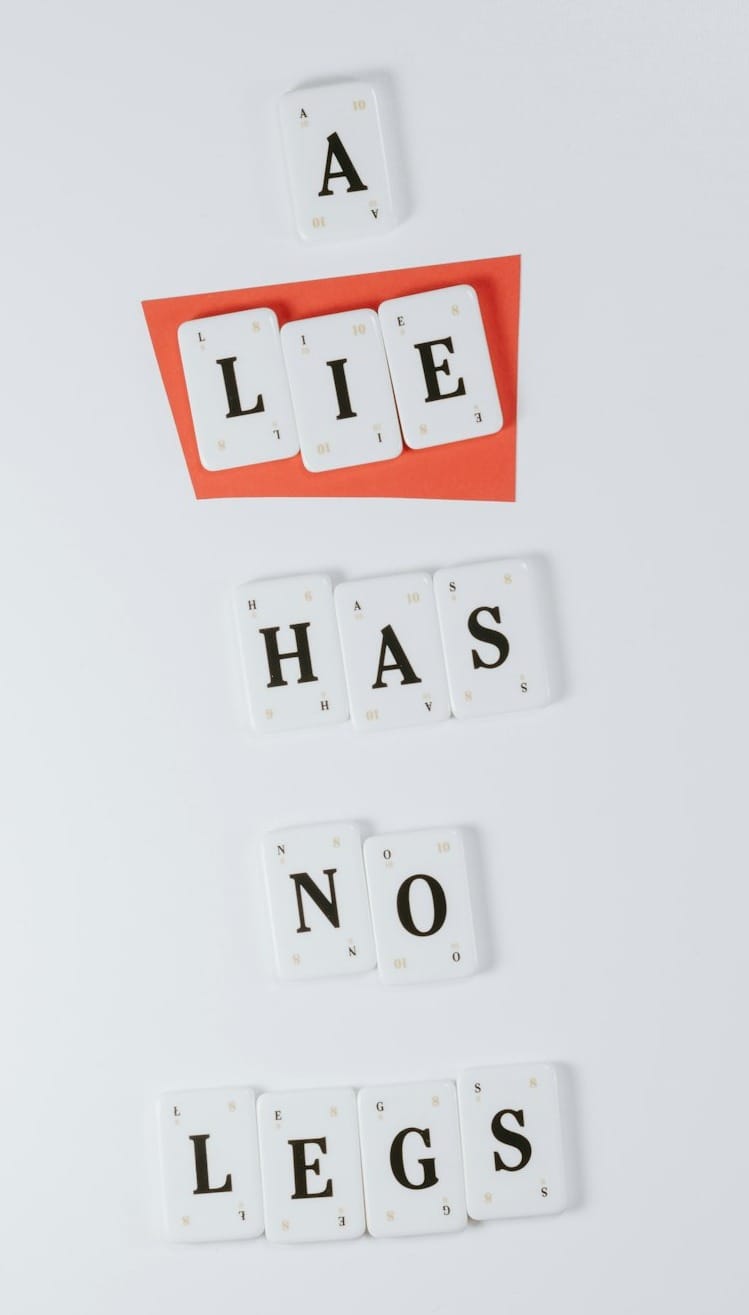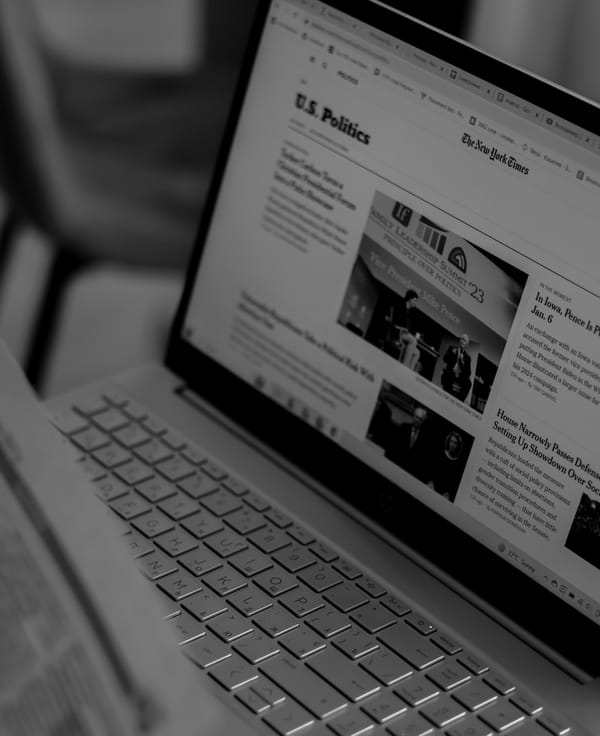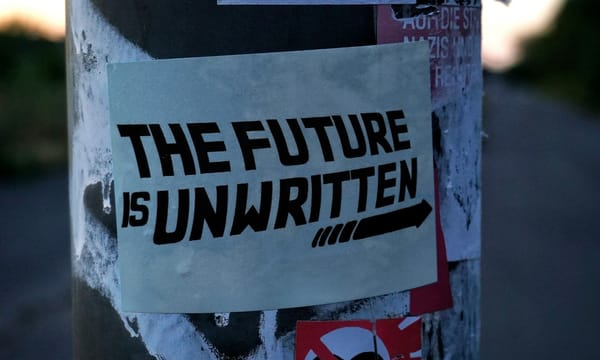Balanced Isn’t Truth: How ‘Both Sides’ News Platforms Normalize Propaganda
They claim to help you “see the whole picture.” What they’re really doing is flattening reality into a partisan vending machine—one where facts and fiction are treated as equally valid options.

In an age of algorithm-driven misinformation, there’s a new breed of digital media platforms claiming to offer a solution: so-called “balanced news.” Platforms like Ground News, AllSides, and SmartNews promise to show users stories from “the left,” “the right,” and “the center”—as if the truth can be located by triangulating opinions.
But this isn’t media literacy.
This is ideological slot-machine logic—designed not to help you think critically, but to let you pick the emotional narrative that feels best to you.
They don’t assess truth. They don’t expose propaganda. They don’t teach people how to evaluate credibility.
They just assign political labels and hand you the remote.
In doing so, they’ve automated one of the most corrosive tactics in modern journalism: false equivalence.
What These Platforms Claim to Do
These apps present themselves as tools for curious, open-minded people who want to “escape the echo chamber.” Their features usually include:
- Color-coded bias ratings for media outlets (e.g., left, center, right)
- The ability to “compare coverage” across the political spectrum
- Interfaces that give you a sense of control over which ideological lens you view On the surface, this seems reasonable.
But the core problem is this:
- They do not measure whether something is true.
- They only measure what it sounds like.
You could have a story backed by public records, court documents, and video evidence placed side-by-side with a conspiratorial blog post that parrots government lies.
And these platforms will say:
“Here’s the left view. Here’s the right view. Choose for yourself.”
That’s not transparency.
That’s ideological relativism dressed up as digital enlightenment.
Why “Balance” Isn’t the Same as Truth
The idea that every issue has two valid sides is one of the most dangerous journalistic fallacies of the modern era.
There is no “both sides” to:
- Whether climate change is real
- Whether trans people deserve human rights
- Whether a government firing career officials and consolidating power is authoritarianism
False balance has allowed election denial, xenophobia, and fascism to be treated as mere “alternative perspectives” rather than existential threats. And these platforms don’t challenge that. They normalize it.
Balance without credibility is just propaganda with better UX.
Where Did “Both Sides” Thinking Come From? A Cold War Inoculation Strategy
To understand how we got here, you have to go back to the Cold War—when the U.S. government wasn’t just fighting communism abroad, but trying to inoculate the American public against totalitarian-style propaganda at home.
In contrast to Soviet state media, U.S. journalism branded itself as objective, neutral, and nonpartisan. That became a cultural ideal. The “fairness doctrine” (enforced by the FCC from 1949–1987) even required broadcasters to present contrasting viewpoints on controversial issues of public importance. It was a noble principle, in theory.
But in practice, this model trained generations of journalists to prioritize balance over truth. Instead of verifying facts, they quoted opposing voices and called it a day. And because many of these “voices” came from elite institutions—politicians, corporations, government agencies— they reproduced establishment bias while pretending to transcend it.
This was never objectivity. It was institutional diplomacy, wrapped in journalistic language.
After Watergate and Vietnam, the model hardened: journalists saw themselves as watchdogs, but also as referees—never taking sides, even if one side was actively attacking democracy. And once the fairness doctrine was repealed, right-wing outlets exploited the vacuum—knowing that mainstream media, out of habit and training, would still treat them as equals.
By the 2000s, this “balance = credibility” myth had become gospel.
By the 2010s, it was being weaponized by bad actors.
And by the 2020s, it’s now embedded in algorithms.
The Psychology Behind It: Why This Feels Useful To So Many
There’s a reason these platforms are popular. They feel responsible. They’re emotionally validating. They give users:
- The warm self-image of being “fair-minded”
- The impression of open-mindedness without the discomfort of real discernment
- A dopamine hit for “doing research” without risking confrontation
They offer the illusion of nuance, but none of the rigor.
Most users will not dig into the sourcing, cross-check the claims, or evaluate methodological integrity. They will pick whichever narrative resonates emotionally because that’s how the human brain is wired when it isn’t trained in analytical thinking.
These platforms don’t disrupt that tendency.
They optimize it.
Why It’s Dangerous in an Authoritarian Era
Authoritarianism doesn’t rise by marching down Main Street in jackboots. It rises when truth becomes optional. When enough people say:
“Well, who’s to say what’s true anymore?”
And “balanced news” platforms make that question feel normal.
They allow:
- Election denial to be presented as “conservative skepticism”
- Mass purges of government officials to be framed as “executive reform”
- Anti-trans legislation to appear as “protecting children”
All under the banner of “just presenting all sides.”
These apps aren’t helping people resist propaganda.
They’re teaching them how to live with it.
What Real Media Literacy Looks Like
Media literacy doesn’t mean knowing what “the right” thinks.
It means knowing how to tell when someone is lying to you.
It means asking:
- Who benefits from this narrative?
- What evidence is cited?
- Is this framing designed to inform—or inflame?
It means understanding the difference between:
- Journalism and opinion
- Data and anecdote
- Fact and spin
And it means recognizing that some stories aren’t “both sides.”
They’re one side telling the truth, and the other side manufacturing a lie.
Real media literacy is about discerning truth, not balancing worldviews.
Truth Has No Algorithm
These platforms don’t promote critical thinking.
They promote critical feeling. And that’s exactly what autocrats want: a population too emotionally disoriented to know what’s real, and too “balanced” to take a stand.
So no, you don’t need “balanced” news.
You need rigorous, evidence-based journalism.
You need courage.
You need clarity.
And you need to stop letting a color-coded interface tell you what counts as fair.
Because if every opinion is valid, then nothing is. And that’s exactly how democracy dies.
Critical Reflection Questions: Spotting False Balance in Your Feed
- When you read a “balanced” article, do you evaluate which side is using evidence vs. emotion?
- Have you ever clicked on a “right-leaning” or “left-leaning” article just because the label matched your belief system? What did you notice?
- Can you name three indicators that a source is credible—not just politically aligned?
- When does presenting “both sides” actually distort reality? Can you think of an example where one side is grounded in fact and the other in disinformation?
- How does it feel to challenge your own bias? What makes you more likely to do it —or avoid it?
- How do you decide when not to give something your attention—even if it’s labeled “news”?
Sources
- Benkler, Y., Faris, R., & Roberts, H. (2018). Network propaganda: Manipulation, disinformation, and radicalization in American politics. Oxford University Press.
- Entman, R. M. (2007). Framing bias: Media in the distribution of power. Journal of Communication, 57(1), 163–173. https://doi.org/10.1111/j.1460-2466.2006.00336.x
- Fitzgerald, K. (2023, September 19). Why both-sides journalism fails the public. Columbia Journalism Review. https://www.cjr.org/analysis/both-sides-journalism-fails.php
- González, R. J. (2017). War Virtually: The Quest to Automate Conflict, Militarize Data, and Predict the Future. University of California Press.
- Graves, L. (2016). Deciding what’s true: The rise of political fact-checking in American journalism. Columbia University Press.
- Harsin, J. (2015). Regimes of posttruth, postpolitics, and attention economies. Communication, Culture & Critique, 8(2), 327–333. https://doi.org/10.1111/cccr.12097
- Meyer, R. (2020, July 22). The media’s ‘both sides’ problem is back. The Atlantic. https://www.theatlantic.com/ideas/archive/2020/07/both-sides-journalism-is-back/614071/
- Rutenberg, J. (2016, August 7). The challenge Trump poses to objectivity. The New York Times. https://www.nytimes.com/2016/08/08/business/media/the-challenge-trump-poses-to objectivity.html
- Vosoughi, S., Roy, D., & Aral, S. (2018). The spread of true and false news online. Science, 359(6380), 1146–1151. https://doi.org/10.1126/science.aap9559
- Zimdars, M. (2020). False balance, misinformation, and the loss of media credibility. In C. Green & D. Leong (Eds.), News, Numbers and Public Opinion in a Data-Driven World (pp. 79–93). Bloomsbury Academic.



